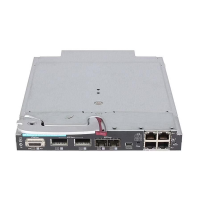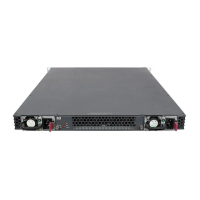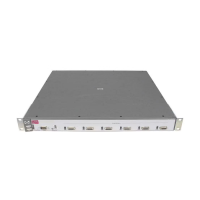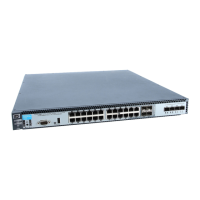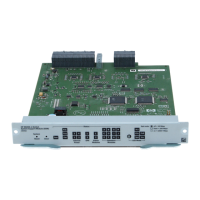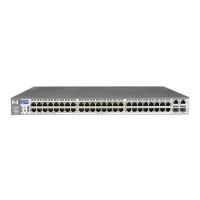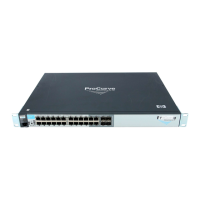5-27
Quality of Service: Managing Bandwidth More Effectively
Globally-Configured QoS
4. Configure the switch to assign the DSCP policy to packets with the
specified TCP or UDP port number or range of port numbers.
Syntax: [no] qos <udp-port | tcp-port> [ ipv4 | ipv6 | ip-all ] <port-number | range
start end > <dscp <codepoint >
Assigns a DSCP policy to outbound packets having the spec-
ified TCP or UDP application-port number or port range,
and overwrites the DSCP in these packets with the assigned
<codepoint > value, where:
• ipv4 marks only IPv4 packets (default).
• ipv6 marks only IPv6 packets.
• ip-all marks all IP traffic (both IPv4 and IPv6 packets).
• port-number specifies a TCP/UDP port-number from 1 to
65535.
• range start end specifies a range of TCP/UDP ports; see
“Operating Notes on Using TCP/UDP Port Ranges” on page
5-23. If you specify a range, the minimum port number
must precede the maximum port number in the range.
• dscp codepoint overwrites the DSCP codepoint in the IPv4
ToS byte or IPv6 Traffic Class byte of matching packets
with the specified value.
Valid values for the DSCP codepoint are as follows:
- A binary value for the six-bit codepoint from 000000 to
111111.
- A decimal value from 0 (low priority) to 63 (high
priority) that corresponds to a binary DSCP bit set
-An ASCII standard name for a binary DSCP bit set
Type ? to display the list of valid codepoint entries.
The DSCP value you enter must be currently associated
with an 802.1p priority in the DSCP Policy table (see Table
6-10). The 802.1p priority and determines the packet’s
queue in the outbound port to which it is sent. If the packet
leaves the switch on a tagged port, it carries the 802.1p
priority with it to the next downstream device.
The default DSCP codepoint is No-override. The DSCP
codepoint is not overwritten in matching packets.
The no form of the command deletes the specified UDP or TCP
port number or range of port numbers as a QoS classifier. If
you configured a range of port numbers as the QoS classifier,
you must enter the entire range in the no command; you
cannot remove part of a range.
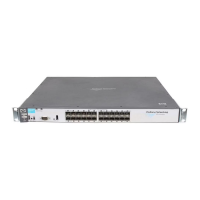
